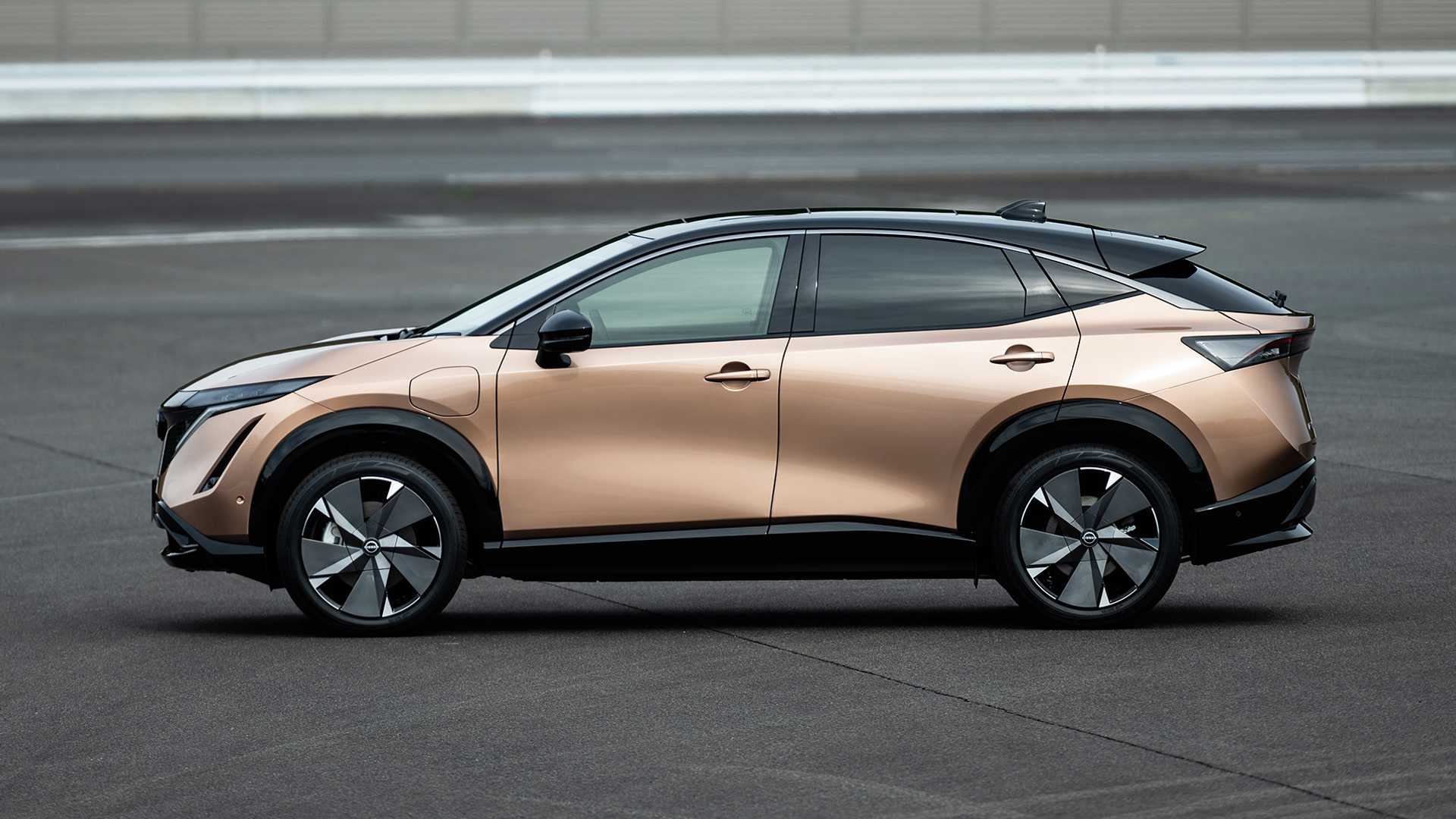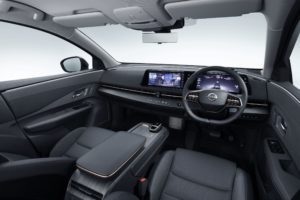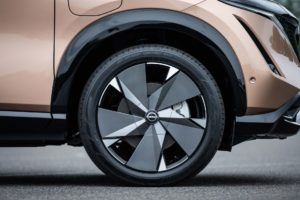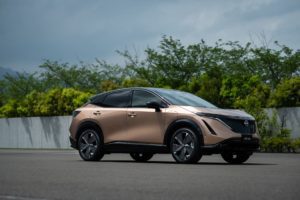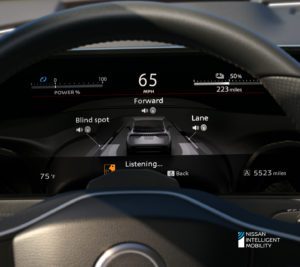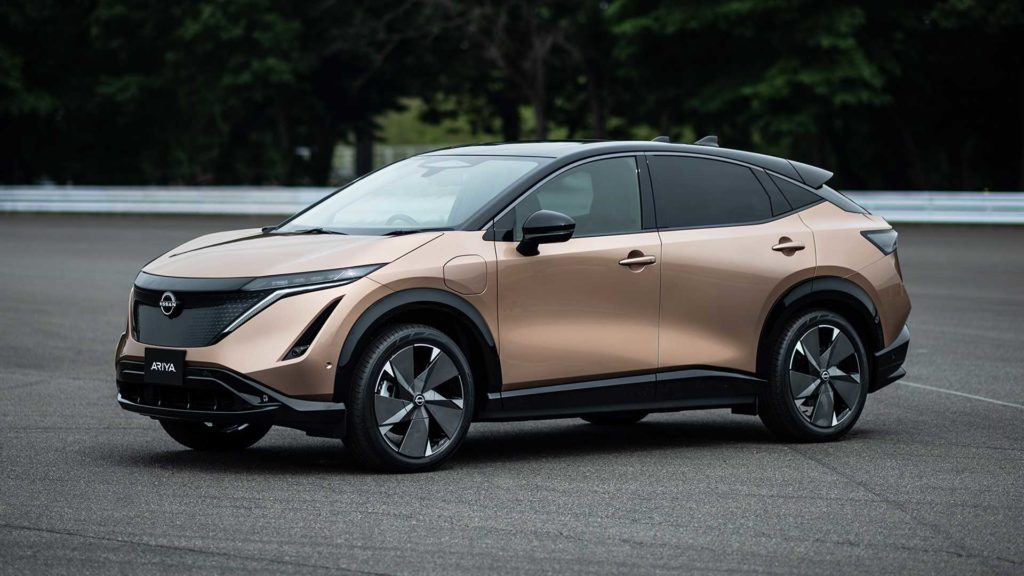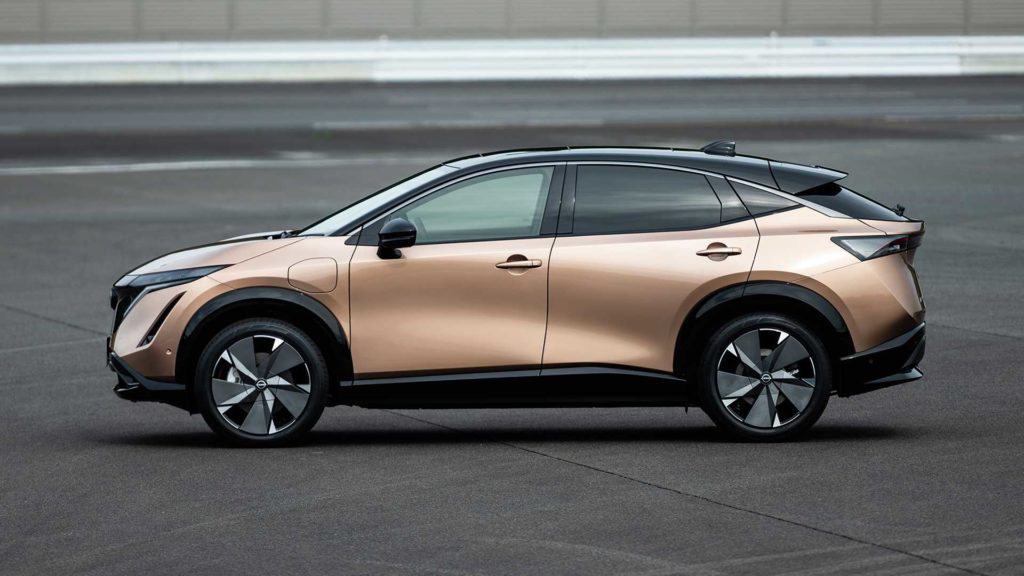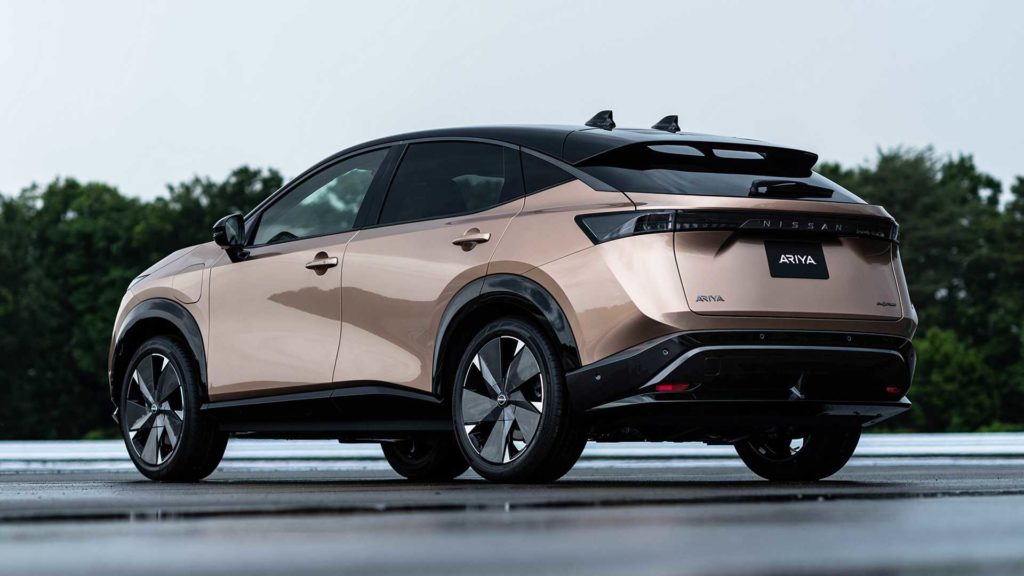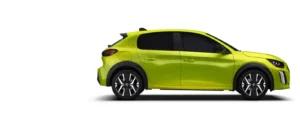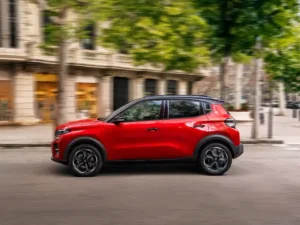Nissan knows a great deal about making and selling EVs based on the LEAF and is now expanding its offerings with the launch of the Ariya SUV.
Until Tesla trumped it the LEAF was the best selling EV in the world with many hundreds of thousands of units sold over the past 8 or so years.

First unveiled last year as a concept, the all electric Ariya is scheduled to go on sale in Japan in mid-2021, and the UK, US and Canada in late 2021. Pricing is expected start around £40,000 with a base range of 225 miles.
The Ariya was unveiled against the backdrop of corporate turmoil, executive turnover, plummeting sales, and pandemic-related cost-cutting at Nissan. The arrest and subsequent escape of Carlos Ghosn, former chairman of the Nissan-Renault-Mitsubishi alliance, dominated the headlines for much of 2019, casting a spotlight on an automaker that appeared to be at war with itself.
As such, the Ariya is the first major new product launch in the post-Ghosn era for the company — and a chance to turn over a new leaf (pun intended). Nissan says the new electric crossover serves as a “key milestone” in the company’s four-year plan “to achieve sustainable growth, financial stability and profitability.”
Built on an all-new Alliance-developed EV platform, the Ariya is the ultimate expression of Nissan Intelligent Mobility, the company’s strategy to further improve the appeal of its vehicles and achieve the ultimate goal of a future with zero emissions and zero vehicle fatalities.
Incorporating the three main pillars of Nissan Intelligent Mobility (Intelligent Power, Intelligent Drive and Intelligent Integration), the Ariya combines advanced electric vehicle technology with a new level of seamless human-machine interface connectivity, offering an entirely new driving experience.
BATTERY, PERFORMANCE, AND RANGE
The Nissan Ariya’s drivetrain is what really differentiates it from the Leaf. Rather than opt for a simple front-wheel-drive arrangement, the Ariya will come in multiple configurations, including a two-wheel-drive version and a twin electric motor setup that will enable all-wheel drive performance, which Nissan is calling the “e-4ORCE” (because everything needs a ridiculous and confusing brand name).
“I’m not afraid to say this is probably the most technologically advanced car that Nissan has made in its history,” Nissan Senior Vice President Ivan Espinosa told reporters on Tuesday. “So we’re putting all of our resources and know-how behind this car.”
Espinosa said Nissan took what it learned from the GT-R sports car’s torque-split system and applied it to the development of the Ariya’s twin motor setup, including the vehicle’s motion, speed, and road handling.
There will also be two battery sizes to choose from — a 63 kWh battery and a 87 kWh one. Nissan claims the two-wheel-drive version will be able to achieve up to 300 miles of driving range, though the automaker has yet to make the Ariya available to the US Environmental Protection Agency or the European Union’s Worldwide Harmonised Light Vehicle Test Procedure (WLTP) for independent verification.
That said, the 2020 Nissan LEAF SL Plus has an EPA-rated range of 215 miles per charge, so presumably it wouldn’t be too much of a stretch for the automaker’s battery supplier, China’s Automotive Energy Supply Corporation, to bump that up to 300 miles.
Nissan isn’t revealing the amount of time it takes to charge the Ariya. EV charging time can be a sticking point for potential buyers, especially for those vehicles that take longer than 15-20 minutes to reach 80 percent capacity. This will be the spec to look out for as Nissan gets closer to production.
Intelligent Power: formidable EV performance for a wide range of needs
The Nissan Ariya’s all-electric drivetrain is an example of seamless integration of advanced EV technology. It takes the excitement and potential of zero-emission mobility to the next level by integrating excellent power delivery, charging capabilities and extended range.
With five core models offered for the European market, including two-wheel-drive and all-wheel-drive versions, the Ariya meets the driving needs of a wide range of customers.
The Ariya 63kWh two-wheel-drive model is ideal for urban and suburban commuters looking for quality and style in their next-generation EV. The Ariya 87kWh two-wheel drive models expands on the 63kWh with an upgraded powertrain and additional range for those looking to venture on longer journeys.
The Ariya e-4ORCE 63kWh all-wheel-drive model offers an attractive balance in performance and value in its segment. With almost no compromise on range, this model offers ample performance and innovative new technologies, including twin electric motors and e-4ORCE control technology that deliver balanced, predictable power to all four wheels.
The Ariya e-4ORCE 87kWh all-wheel-drive will offer a longer range coupled with pure power thanks to the e-4ORCE technology. Topping the range, the Ariya e-4ORCE 87kWh Performance model benefits from a higher power output and will be the epitome of the best performance-technology combination.
Whether the two- or all-wheel-drive model, the power and performance of the Ariya will bring excitement back to the daily commute and urge drivers to explore further. To allow even more exploration, the Ariya will be rated to tow up to 1500kg.
ADVANCED TECH
Nissan is empowering the Ariya with the newest version of the automaker’s advanced driver assistance system, ProPilot Assist 2.0. The original ProPilot was a Level 2 partially automated system, which allowed the vehicle to control speed, distance from other cars, and keeping the car in the intended lane with minimal input from the driver. Cameras detect lane markings at highway speeds, and then adaptive cruise control, lane-keep, and blind spot detection systems keep you in that lane until you deliberately change lanes.
With the Ariya, ProPilot Assist is getting an active driver monitoring system to enable hands-free driving on highways. Nissan first announced its plans to upgrade ProPilot Assist to allow for hands-free driving last year. The only other automaker to offer a similar system right now is GM’s Super Cruise. Ford has said it would introduce its own hands-free system with the electric Mustang Mach-E, which will go on sale in the second half of 2021.
Previously, Nissan had included ProPilot Assist in the the Leaf, top-selling Rogue SUV, and the sub-$30,000 Altima. With the addition of the Ariya, Nissan has established itself as a leader of offering partially automated driving in affordable, mass-market vehicles.
DESIGN
The Ariya looks much sportier then Nissan’s other crossover, the Rogue, thanks to a low, wide stance. And the vehicle lacks a lot of the sharp, angular lines seen on many of the Japanese automaker’s vehicles, opting for a softer, more family-friendly appearance. Despite being tech-forward as it comes, the Ariya lacks many of the idiosyncratic (and slightly ridiculous) flourishes that Nissan likes to stuff into its concept vehicles.
Still, it’s an EV, so it has to have ultra-thin headlights a la EV startups like Byton and Faraday Future, and brake lights that stretch across the rear like Tesla’s Cybertruck. And the solid faux grille probably won’t be as divisive as the Ford Mustang Mach-E, though it may still deter some buyers looking for something more familiar-feeling.
This is not an over-designed car; if anything, it’s exceedingly normal looking, which for an EV can be a relief. Most EV designs tend to lean too heavily on the automaker’s idea of “the future,” but can come off as ham-fisted. The Ariya’s wheels certainly stand out, but nothing else about this vehicle screams “electric,” which can help lure potential buyers who are weighing whether to make the switch from a gas-powered vehicle.
The photos Nissan shared with media outlets show off the vehicle in a copper paint tone, but Alfonso Albaisa, senior vice president for global design, said the Ariya would come in “candy red,” “deep blue,” and a number of other color schemes.
INFOTAINMENT
Inside the vehicle there are two 12.3-inch horizontal screens, one behind the steering column and the other in the center of the dash. The screens aren’t floating above the dash like Tesla’s Model 3 and Model Y, but are oriented in a wave-like shape that seems like it would be easy to reach and operate.
Not everything is controlled via these two screens. The car’s HVAC system can be accessed via a set of capacitive haptic switches that are integrated into the wood paneling underneath the center screen that offer a similar feeling to mechanical switches by vibrating when touched.
There’s an abundance of legroom, which is typical of a car without an internal combustion engine. That said, it’s a family vehicle designed to fit five people. “It’s really a very unique sensation that you have when you sit in the car,” Espinosa said.
The Ariya comes with Apple CarPlay and Android Auto wireless connectivity. And it will be Nissan’s first model to include over-the-air firmware updates to upgrade the car’s infotainment system, electric and electronic architecture, chassis, climate system, and EV settings.
Car dealers are generally wary of OTA updates for fear of being cut out of the lucrative service and maintenance process. Basically, if you can fix your car with an OTA update, you don’t need to take it in to the dealership as often, and that means less money for them. But car buyers seem to like them, insofar as it reminds them of their smartphone’s constantly updating operating systems plus most consumers have little regard for car dealers.
CHARGE TYPE
CCS (For Europe)
Nissan’s departure from CHAdeMO to CCS with the Ariya may well strike a deathblow to CHAdeMO in the US and Europe, as Nissan along with sister company Mitsubishi were really the only OEM making CHAdeMO-capable EVs and PHEV in any real volume.
The Ariya will charge at speeds up to 130 kW on a DC Fast charger.
As for AC Charging, the Ariya will have a 7.2 kW onboard charger which is OK, but not great. Most of the new electric vehicles coming out with large batteries are opting for 9.6 kW AC charging, which can significantly reduce the charge time.
You may notice in the photo gallery that there are chargeports on both sides of the vehicle. When asked about this Nissan said that only the vehicles delivered in Japan will have two chargeports. That’s because those vehicles need a CHAdeMO inlet, and that will be located on the right front fender. Ariya shipped to the US and Europe will have a single Combo chargeport located on the left side front fender.
NISSAN’S FUTURE
It’s a tough moment for automakers, especially as they attempt to resume production that was paused by the coronavirus outbreak. Nissan like almost the entire industry has had to shutter its facilities and furlough employees in response to the crisis.
Against that backdrop, automakers are still struggling to sell EVs, especially in the US where gas is selling for a little more than $2 a gallon. The tax credit helps to soften the blow for many consumers, but Nissan will soon become ineligible as it approaches 200,000 EVs sold in the US. After that, the credit begins to phase out and the value proposition on a $40,000 vehicle that takes an unknown amount of time to charge and can’t travel as far on a single charge as a Tesla begins to dwindle.
Luckily, Nissan has a lot of experience selling EVs that it can apply to the Ariya. And with its unique motor configuration and normal-but-far-from-boring design, it stands as good a chance at success as the Leaf — if not more so.
SUMMARY
There’s a lot to like about the Ariya. We are particularly happy to see that Nissan is using a large battery that will offer 300 miles of range and that they are finally using a proper thermal management system. 130 kW DC fast charge isn’t great by today’s standards, but it is good enough and certainly an upgrade from the LEAF.
The Ariya is expected to launch about a year from now in Japan, with availability in the US and Europe before the end of 2021. Nissan tells us the starting price will be about $40,000 in the US and £40,000 in the UK which is roughly $8,000 more than than the starting price of a LEAF S. So while the Ariya will be a much more capable EV than the LEAF, buyers that are shopping in the ~$30,000 price range (pre-subsidiaries) will lose one of the options available to them today once the LEAF is retired.
We’re looking forward to learning more about the Ariya in the coming months leading up to its launch.
Learn more at Nissan News.

